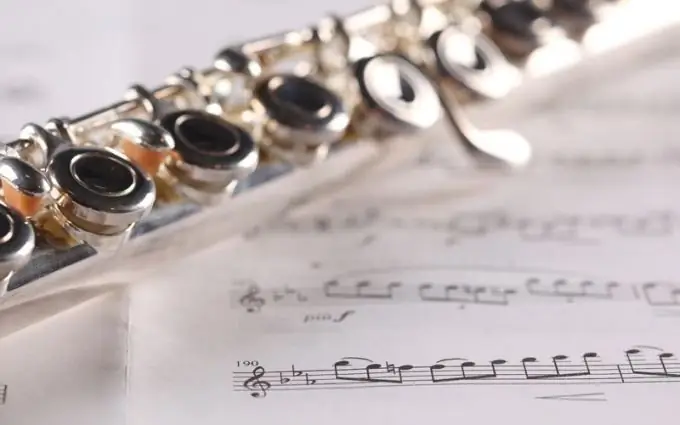The selection of works by ear is one of the many skills that a musician must possess. This skill is taught in solfeggio and music theory lessons. Thanks to the development of hearing and analytical thinking in these classes, the musician can easily recognize the notes of a piece - individual parts or general harmony.

It is necessary
- - ETM textbook;
- - manuals on solfeggio;
- - collections of dictations in 1, 2, 3, 4 voices;
- - audio recordings of notes.
Instructions
Step 1
Sing the scales in a different sequence. Explore the entire quarter-fifth circle and all types of tonalities: natural, harmonic, melodic, folk modes. Sing each scale in a comfortable octave. Naming alteration signs.
Step 2
Learn to sing intervals in a melodic and harmonic arrangement (sequentially or simultaneously). For the second option, invite a musician friend to sing the second voice. Bach's chorales and exercises presented in solfeggio textbooks (in particular, Ladukhin's manual) are especially useful for this.
Step 3
Ask a friend to play dictations for you. Start with simple monophones: the melody is played on the piano, and you try to guess it with your back to the instrument. Don't point your finger at the sky. After several lessons in music theory and singing solfeggio, you have already learned how to determine the degrees of the scale. In the melody, also try to find the tonic, the gravitation towards it, the distance from it to the note being played.
Step 4
Gradually complicate the task by increasing the number of bars in the dictation from 4 to 12-16. As your hearing develops, complicate the rhythmic pattern, add chromaticism. After completing the dictation and checking with the original, sing it.
Step 5
Develop not only a melodic ear (on monophonic dictation). Gradually include two- and three-part dictations in your class. Little tip: in polyphonic exercises, first record the lower voice, not the upper voice. Medium and tall ones follow. After recording, also sing the dictations.
Step 6
Listen to your favorite songs. Try to write them in the same way as dictations: repeat many times, then record the bass, and then the chord and melody. By the way, in this matter you have more freedom than in dictation: it doesn't matter how many times you play the track. Alternatively, you can test your guesses by playing a note on an instrument (guitar or piano).






